When people experience chronic stress, their sympathetic nervous system tends to stay active. The sympathetic nervous system is the part of the nervous system that prepares the body for fight or flight. This can create pain, tension, and anxiety. The vagus nerve activates the opposing nervous system, the parasympathetic nervous system. This brings the body into balance.
Meditation, humming, deep breathing, and yoga activate the vagus nerve. Deep diaphragmatic breathing decreases perceived stress and improves decision-making capabilities.2 Studies also show positive emotions and social interactions improve vagal tone. This, in turn, decreases stress.3
Try these breathing practices to stimulate your vagus nerve.
4:8 breath
Slow-breathing with longer exhales stimulates the vagus nerve, that is why this technique works so well. Even a small amount of stress can cause a physical reaction in your body including an increased heart rate, shallow breathing, and increased muscle tension. By extending your exhale, you can calm your nerves, control your heart rate, and improve your decision-making abilities.
Try this breathing practice anytime you’d like to relax or calm down.
Step 1: Permit yourself to focus on only you for the next few minutes. Find a comfortable position in a quiet, safe space to settle into. You can sit or lie down for this exercise. If you’d like, you can close your eyes. Shift your focus to your breath and this moment.
Step 2: With your next breath, inhale through your nose and exhale through pursed lips. Continue breathing in through your nose and out through your mouth for the rest of this practice.
Step 3: On your next inhale, lengthen your inhale to the count of four and then exhale to the same count. Do this for 3 rounds.
Step 4: Now double the length of the exhale. Inhale for a count of 4. Exhale for a count of 8. Do this for the remainder of your practice.
Step 5: When you’re ready to end your practice, wiggle your fingers and toes and allow your breath to come back to its normal pace.
Step 6: Notice how you feel physically and mentally. Refer back to these steps the next time you want to practice your 4:8 breathing.
Humming
To activate your vagus nerve with this practice, you’re going to slow your breathing and create a low hum during the exhale. The vibration created from humming signals the vagus nerve and creates a relaxation response. Whether you’re feeling shut down or overwhelmed, this exercise can help settle your nervous system and restore balance.
Step 1: Wherever you’re at right now, take a moment to notice your body position. Take your time to find a position seated or standing that is aligned and comfortable.
Step 2: We’re going to perform two rounds of humming. We’re going to inhale and on the exhale we’ll begin, then we’ll inhale again and perform it once more.
Step 3: Inhale a full breath, and low hum as you exhale. Pause and let the next inhale come naturally.
Step 4: Inhale a full breath, and low hum as you exhale. Repeat this however many rounds feels best.
Step 5: Now rest, and simply notice how your body feels. Take your time to notice your breath, any change in muscle tone, and how your thoughts can simply slow down for a moment.
Chronic pain and ongoing stress can really take a toll on your body. Practicing relaxation techniques that stimulate your vagus nerve can be a great tool on your path to improving your health. If you would like more information or would like help on developing relaxation techniques or reducing stress, visit MFR Health. Here, you will find a variety of resources as well as our MFR Directory, a tool you can use to locate a certified MFR therapist near you today.
References:
- Gerritsen, R. J., & Band, G. P. (2018). Breath of life: The respiratory vagal stimulation model of contemplative activity. Frontiers in Human Neuroscience,12. doi:10.3389/fnhum.2018.00397https://www.ncbi.nlm.nih.gov/pmc/articles/PMC6189422/
- De Couck, M., Caers, R., Musch, L., Fliegauf, J., Giangreco, A., & Gidron, Y. (2019). How breathing can help you make better decisions: Two studies on the effects of breathing patterns on heart rate variability and decision-making in business cases. International Journal of Psychophysiology,139, 1-9. doi:10.1016/j.ijpsycho.2019.02.011https://www.sciencedirect.com/science/article/abs/pii/S0167876018303258
- Kok BE, Coffey KA, Cohn MA, et al. How positive emotions build physical health: perceived positive social connections account for the upward spiral between positive emotions and vagal tone [published correction appears in Psychol Sci. 2016 Jun;27(6):931]. Psychol Sci. 2013;24(7):1123-1132. doi:10.1177/0956797612470827

